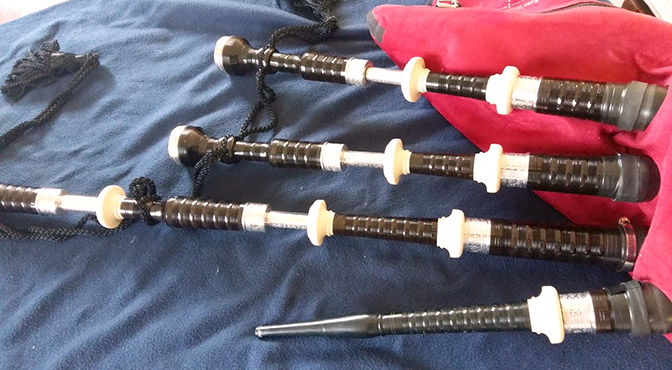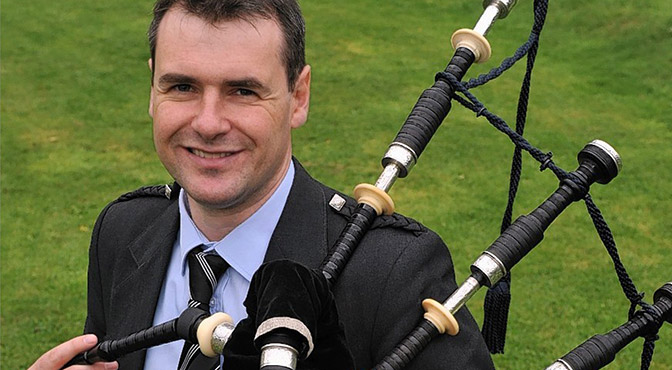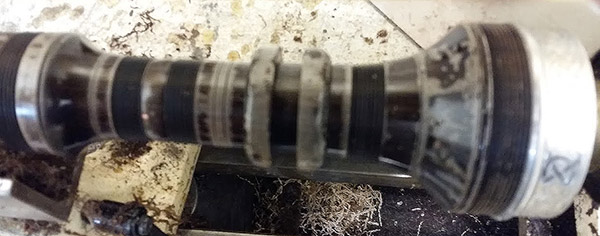

After reading of Niall Stewart’s stolen pipes a couple of weeks ago, a weird sort of déjà vu!
Over the years, I know of five sets I have made that have been stolen. The set Nicholas Taitz plays here in South Africa were actually stolen out of our house. Nick had given them to me to remount with engraved mounts and they were standing inside our front door in a very smart wooden box ready for me to get started on. We had a break-in during the night. Amongst other things, they took the pipes but fortunately had looked inside the box whilst still in the garden and seeing they were bagpipes had just dumped them there.
Another set I made for David Fick, a pupil of mine, and a very good player. David left school at the end of last year and during our National Arts Festival in early July went busking. Afterwards he went to visit a friend and left his pipes (an engraved set of my manufacture) on the back seat of his locked car. In South Africa it is very foolish to leave anything in the car.
They vanished. Needless to say he was distraught. He and friends and family combed the area, without success. Then about two months later someone spotted a man walking down the street carrying a set of pipes. Knowing the story, he investigated, and David was eventually reunited with his instrument.

Recently I finished refurbishing David’s pipes. They must have been lying in bushes for the intervening two months during which time we had had some quite heavy rain here. I think my wife and I were overseas when they were recovered.
David let the pipes dry out (he couldn’t get the joints apart at first), and then brought them to me for refurbishment. He lost two plastic chanters, and the expensive soft case that they were in. The chanters are probably still out there. (Just goes to show, it’s safest to keep your pipes in a really tatty box!)
[wds id=”6″]
Below is a picture of one tenor showing what they looked like, and [top] a photo of the redone instrument. (Not the greatest pics!) I thought the varnish had largely flaked off, but what you will see in the picture are grey patches (which I thought were bare wood), but are in fact just badly discoloured varnish from the prolonged soaking in water.
All the combing was discoloured, while the beads were more or less unmarked – presumably water ran off the beads while it lodged in the combing. In fact the varnish was all more or less intact – there were very few places where it had come off at all.

Best of all, despite the soaking they must have had, (and from the marking of the wood, one side obviously lay in dampness while the top side dried out) – all the pieces were still absolutely straight. I had really feared for the worst with warping under those conditions. It shows the value of the slow process I follow, turning the parts down and leaving them oversize, waiting a couple of months and doing this again, before finally doing the finish turning. Any slight warping, as stresses in the wood are relieved, has happened by then.
The night I finished the set I went to bed happy. The next morning I read about Niall’s pipes and the following day that they had been recovered, though very wet. I must say when I first read about them being missing I feared the worst. My first thoughts were that they were likely to have been stolen because in Scotland the thief knew what he was taking and its potential value. It followed from that that they were unlikely to be recovered. (How glad I was to be proved wrong.) In SA you know that the thief really won’t appreciate what he has taken so once he discovers what he has it will most likely be chucked into bushes or burnt.
I can only imagine Niall’s relief at his pipe being recovered. We pipers do get very attached to our instruments.
[wds id=”3″]
















Eish!